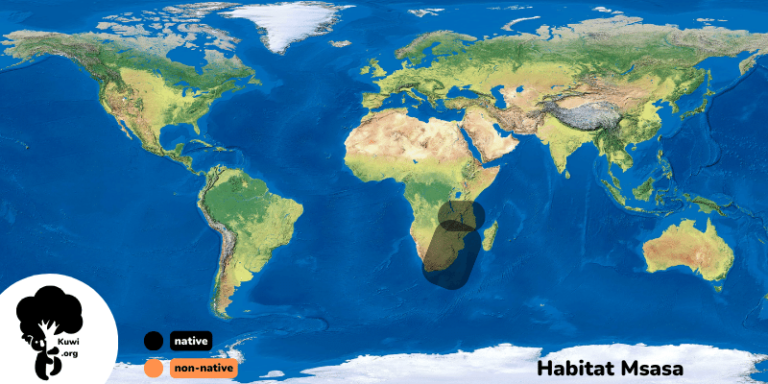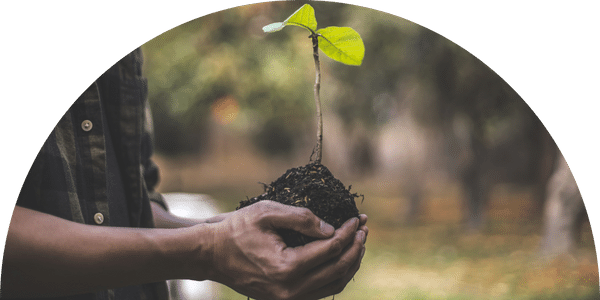Msasa tree
Brachystegia spiciformis, commonly known as Msasa, is a medium-sized African tree with compound leaves and clusters of small fragrant green flowers. The tree is wide and displays a distinctive amber and wine-red color when young leaves emerge in spring (August-September).
The term msasa is often employed as a proper noun in African place names. It also translates to ‘rough plant’ in Swahili. Other common names include mundu, myombo, mtondo (Tanzania), and muputu (Zambia). In the Venda language, the plant is known as mutsiwa, meaning ‘the one that remains behind.’


📊 Statistics
The tree typically reaches a height of about 16 meters, though it may be shorter in more drought-prone regions. In central Zambia and eastern Angola, impressive specimens of about 18-19 meters are common due to heavy rainfall during the growing season. It prefers inland locations at an altitude of approximately 1000-1400 meters (due to the sharp difference between day and night temperatures), although it grows at sea level at its southernmost extent.
The tree undergoes a series of changes with the seasons. It begins shedding its leaves as the cool season starts at the end of May (somewhat slowly), and by early August, it is bare or nearly bare. Towards the end of August, as temperatures rise again, new leaves are produced. These are often bright red in color but vary from almost purple to brownish in different individuals. The color changes to deep green over a period of 10-20 days.
Inconspicuous flowers appear after the new leaves, followed by dehiscent pods (about 12-15 cm long) in April. Similar to many legumes, the pods split explosively, and the flat seeds (about 2 cm in diameter) are thrown some distance from the parent tree.
Habitat
Msasa thrives in savannas, both in open and closed forests in South and East Africa, primarily in Tanzania, Zambia, Zimbabwe, Malawi, and Mozambique. A remote population of Brachystegia has recently been discovered in the Soutpansberg Mountains in northern South Africa. This tree species is protected in South Africa.
Msasa is a tropical tree and flourishes in open forest areas with a clear distinction between wet and dry seasons. Its northernmost distribution is near Tabora in Tanzania, and the southernmost point is near Quissico on the coast of Mozambique, just outside the tropics.

Ecology
Msasa ecologically dominates vast areas of central Africa where sufficient summer rainfall occurs. In many parts of Zimbabwe, Zambia, and Malawi, it is the dominant tree in the forest, and its colorful spring blossom is a striking seasonal marker.
It can tolerate light frost, as long as there is little rain during the cool season, as seen on the Mashonaland plateau, where it often co-dominates with the similar mnondo (Julbernardia globiflora). Further north, it is less dominant but reaches its largest size. Msasa develops heavy spreading branches and an elegant crown, and mature specimens are valued in parks and gardens. However, it grows very slowly, so it is rarely cultivated.
Use
Just like its appearance varies significantly from place to place, the same holds true for its utilization. In regions where Msasa trees don’t grow very tall, they are predominantly employed as fuel (charcoal and firewood). In other areas, such as central and northern Mozambique, they are extensively used for furniture, railway sleepers, and construction timber.
Traditionally, Msasa is utilized in various regions due to its potential medicinal properties. It is employed for digestive issues, treating wounds and skin conditions, and conjunctivitis. However, scientific evidence supporting these applications is limited.
IUCN Red List
Msasa is listed on the IUCN Red List as ‘vulnerable’ due to a 20% decline in population over the past three generations, attributed to human exploitation and a natural reduction in its distribution range.

Plant this tree


